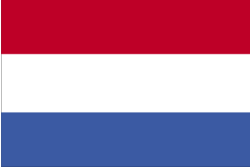Netherlands: Difference between revisions
imported>Ro Thorpe mNo edit summary |
imported>Martijn Lens (provinces) |
||
| Line 6: | Line 6: | ||
The Netherlands was an independent [[republic]] from 1579 until 1806, when [[Napoleon Bonaparte]] appointed his brother [[Louis Bonaparte]] as the first king of the Netherlands. In 1810 the country ceased to exist, as it became part of the French Empire. After the [[Congress of Vienna]] in 1815, the country became a kingdom with [[William of Orange I]] as the first king. His descendant, [[Beatrix of Orange]], is now queen of the Netherlands. The country is a [[constitutional monarchy]] with a [[bicameral]] parliament, see [[Dutch constitution]]. It is a founding member of the [[European Economic Community]], which evolved into the present [[European Union]]. | The Netherlands was an independent [[republic]] from 1579 until 1806, when [[Napoleon Bonaparte]] appointed his brother [[Louis Bonaparte]] as the first king of the Netherlands. In 1810 the country ceased to exist, as it became part of the French Empire. After the [[Congress of Vienna]] in 1815, the country became a kingdom with [[William of Orange I]] as the first king. His descendant, [[Beatrix of Orange]], is now queen of the Netherlands. The country is a [[constitutional monarchy]] with a [[bicameral]] parliament, see [[Dutch constitution]]. It is a founding member of the [[European Economic Community]], which evolved into the present [[European Union]]. | ||
== Administrative division == | |||
The Netherlands is divided in provinces, twelve in total: | |||
* [[Drente]] - capital: [[Assen]] | |||
* [[Flevoland]] - capital: [[Lelystad]] | |||
* [[Friesland]] ([[Frisian language|Frisian]]: ''Fryslân'') - capital: [[Leeuwarden]] | |||
* [[Gelderland]] - capital: [[Arnhem]] | |||
* [[Groningen]] - capital: [[Groningen (city)|Groningen]] | |||
* [[Limburg]] - capital: [[Maastricht]] | |||
* [[Noord-Brabant]] - capital: [['s-Hertogenbosch]] (also called ''Den Bosch'') | |||
* [[Noord-Holland]] - capital: [[Haarlem]] | |||
* [[Overijssel]] - capital: [[Zwolle]] | |||
* [[Utrecht]] - capital: [[Utrecht (city)|Utrecht]] | |||
* [[Zeeland]] - capital: [[Middelburg]] | |||
* [[Zuid-Holland]] - capital: [[The Hague|Den Haag]] (also: '''s-Gravenhage'') | |||
Revision as of 04:51, 2 February 2008
The Netherlands is a country that lies at the western end of the North European Plain, which extends to the Ural Mountains. Except for the southeastern part, the Netherlands is flat and about 40% of the country lies below sea level. The inhabitants of the Netherlands, called the Dutch, have built dykes to hold back the sea. The country is situated at the estuary of the river Rhine, which originates in Switzerland, and the river Meuse, which runs via Belgium from France to the city of Rotterdam, the main seaport of the Netherlands.
The Netherlands is highly industrialized and one of the most densely populated countries in Europe. Its surface area is 41.528 km² (of which 18,41% is water) and its 2007 population is 16,570,613. This gives 489 inhabitants per km² of dry land. The capital of the country is Amsterdam, while the government is seated in The Hague.
The Netherlands was an independent republic from 1579 until 1806, when Napoleon Bonaparte appointed his brother Louis Bonaparte as the first king of the Netherlands. In 1810 the country ceased to exist, as it became part of the French Empire. After the Congress of Vienna in 1815, the country became a kingdom with William of Orange I as the first king. His descendant, Beatrix of Orange, is now queen of the Netherlands. The country is a constitutional monarchy with a bicameral parliament, see Dutch constitution. It is a founding member of the European Economic Community, which evolved into the present European Union.
Administrative division
The Netherlands is divided in provinces, twelve in total:
- Drente - capital: Assen
- Flevoland - capital: Lelystad
- Friesland (Frisian: Fryslân) - capital: Leeuwarden
- Gelderland - capital: Arnhem
- Groningen - capital: Groningen
- Limburg - capital: Maastricht
- Noord-Brabant - capital: 's-Hertogenbosch (also called Den Bosch)
- Noord-Holland - capital: Haarlem
- Overijssel - capital: Zwolle
- Utrecht - capital: Utrecht
- Zeeland - capital: Middelburg
- Zuid-Holland - capital: Den Haag (also: 's-Gravenhage)
